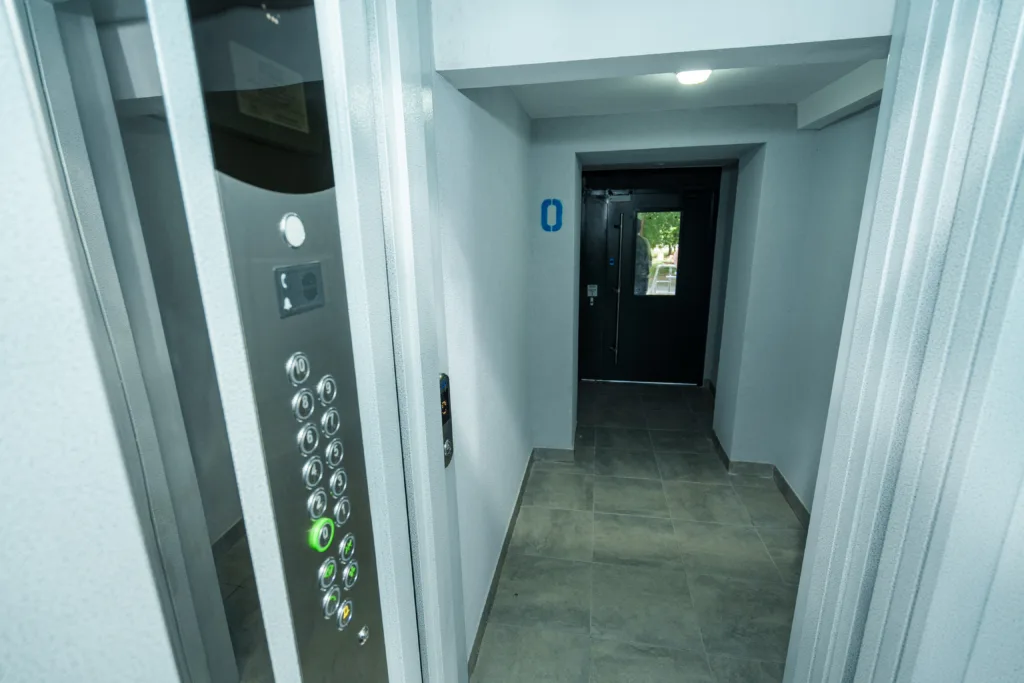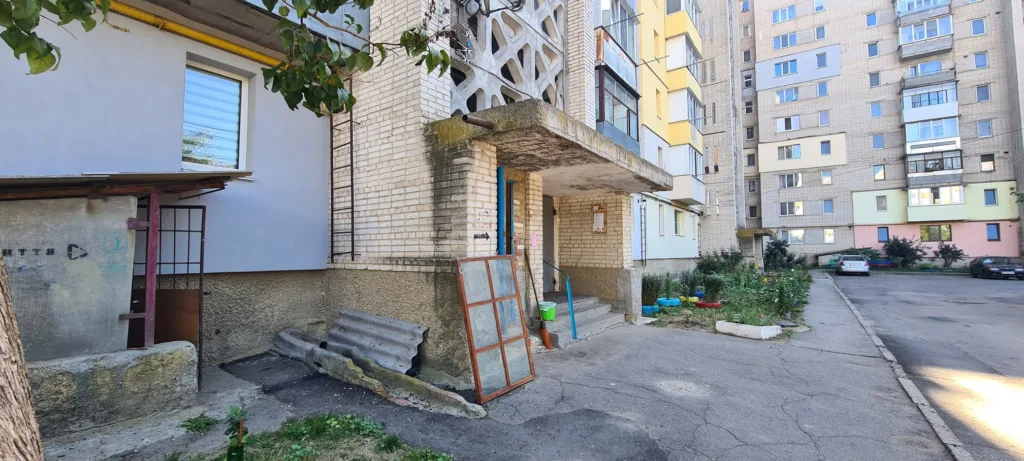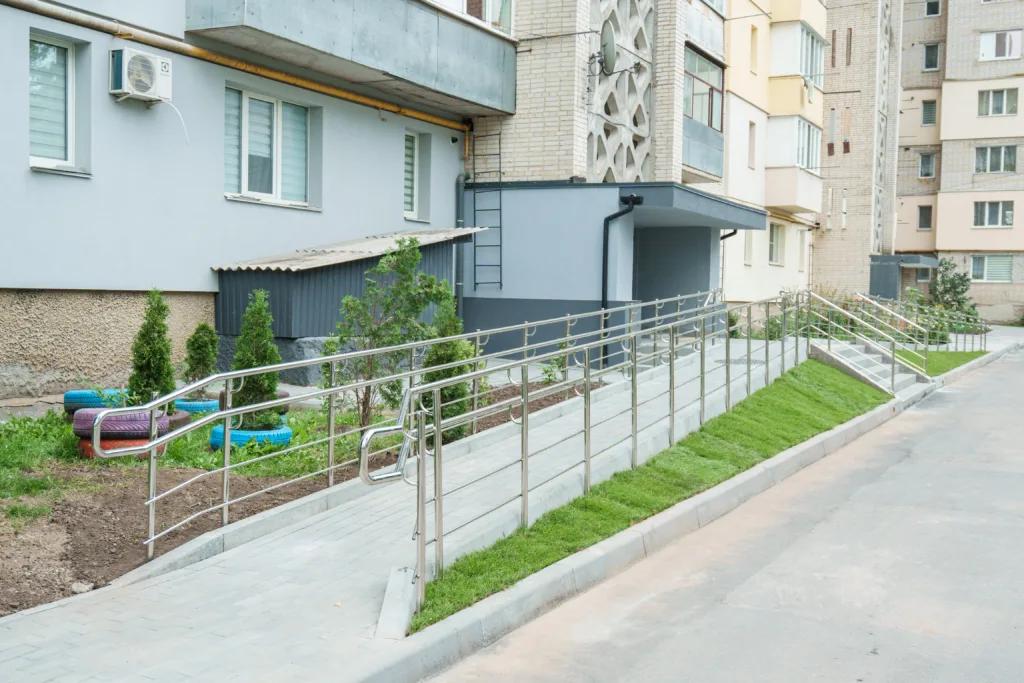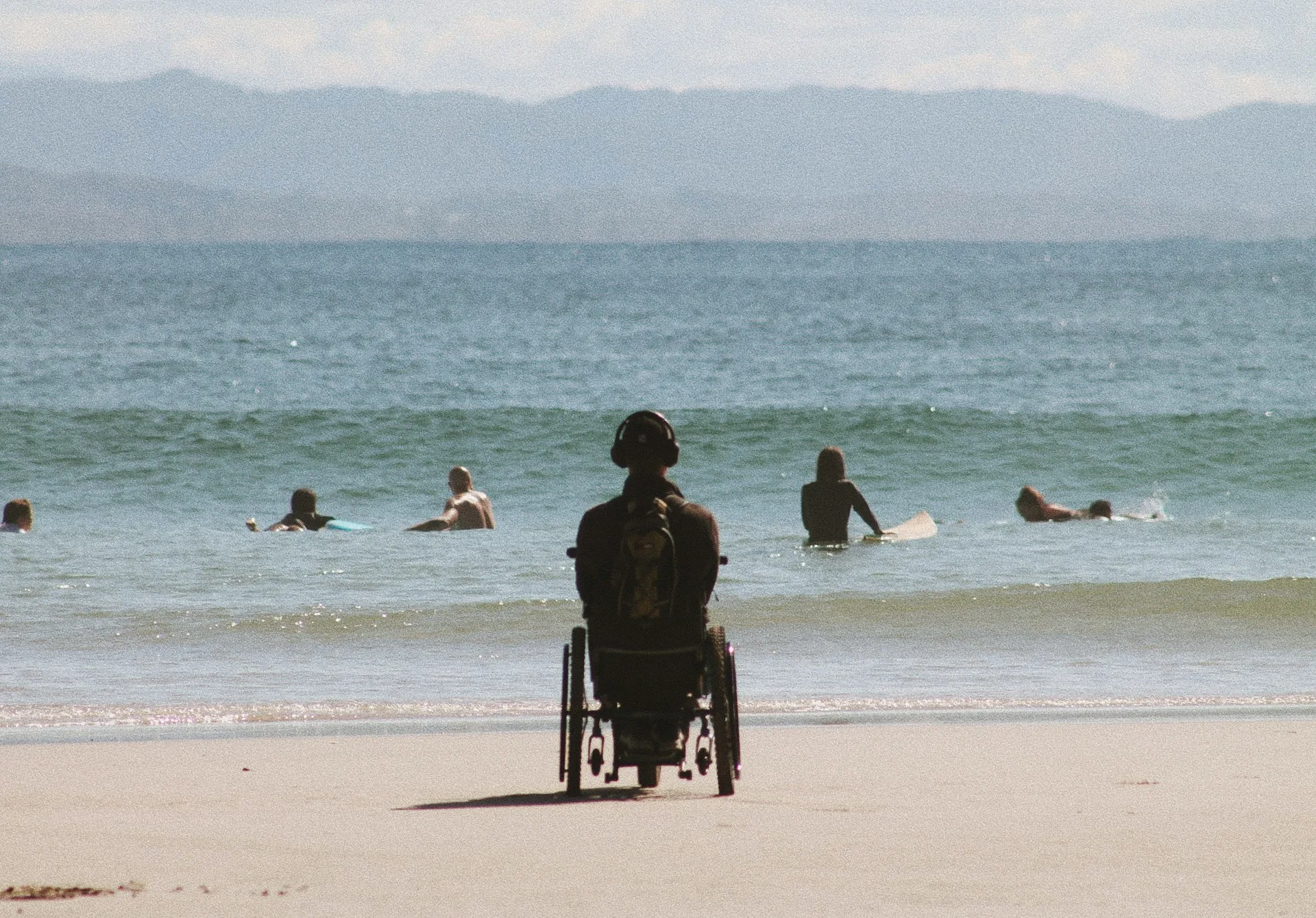Despite the stated goals and acute public demand for accessibility, particularly due to military injuries and the increasing number of disabled veterans, the reality of Ukrainian urban space is far from ideal. According to a UNICEF survey, 83% of Ukrainians in spring 2023 recognised accessibility as a new value, and in autumn this figure rose to 87%. However, state monitoring shows a sad picture: of the more than 93,000 facilities inspected, only 20% meet accessibility standards, and almost half (47.5%) remain inaccessible to people with reduced mobility. This means that hundreds of hospitals, schools, public buildings and bus stops still have significant barriers for people in wheelchairs or with other disabilities.
Read also: Veteran paints pictures with wheelchair wheels
City initiatives and local projects
Some cities are nevertheless coming up with successful solutions. For example, in Vinnytsia, a unique lift with two entrances – from the stairwell and from the courtyard at pavement level – was installed in a typical nine-storey building. This allowed the former rubbish chute to be replaced with an additional vestibule and a porch with automatic doors. War veteran Oleksiy Yurchalov, who uses a wheelchair after being wounded, notes: “Previously, I couldn’t get to my apartment on my own — I needed two people to help me. Now I can get to my home without any obstacles.” Another important area of focus has been the renovation of pavements and bus stops. In Kropyvnytskyi, “bevel-free” paving slabs without slopes are being laid — such a flat surface makes it much easier for people in wheelchairs to move around.



Similarly, several tram stops on routes in Dnipro have been modernised: raised platforms and tactile paving have been installed, and waiting areas have been equipped with canopies and convenient access for wheelchairs. This allows people with mobility impairments to safely get on and off public transport. In Poltava, for example, the Barrier-Free Movement project is looking into renovating a dormitory at the Pedagogical University by installing standard ramps and redesigning the entrance. These examples show that with the right funding and planning, barrier-free infrastructure really works.
Read also: Ukraine has a new reason for establishing disability
Daily barriers: what we really have to overcome
Despite positive projects, ordinary city streets and buildings often remain inconvenient. In practice, the problem is evident even in pilot cities. Activists in Lviv and other regions have noted that where there are cobblestones or sidewalks with protrusions, people with prams have to make detours. The veteran community also mentions the installation of accessible ramps. In Ivano-Frankivsk, a barrier-free map was created, which showed that at 182 intersections, low kerbs need to be rebuilt, and at another 111, ramps need to be added. As the mayor’s advisor, veteran Yuriy Haponchuk, explains, they analysed the main routes where wounded soldiers travel daily. “We need to retrofit the ramps so that soldiers who have lost limbs and now use wheelchairs can travel normally.” Unfortunately, real-life inspections reveal many violations.
For example, on 6–7 August 2025, veterans from the public organisation “Zrush Skelyu” (Move the Rock) inspected a number of facilities in Ivano-Frankivsk, including hospitals, the city council, railway stations and central streets. The results showed that the main issues were the excessive angle of ramps, the lack of barrier-free toilets in the city council, and barrier-free paving. And this is in an environment that claims to be positive. Similar inspections by activists reveal acute problems in transport (narrow bus entrances, lack of ramps in the metro), in public institutions (steep stairs with no alternatives) and on the streets (rough paving, lack of lowered kerbs).
However, certain changes have been achieved by cities and communities. Here, you can see how barrier-free tiles are being laid on one of the renovated pavements in Kropyvnytskyi – work is underway on a new, even surface, and a yellow tactile strip is being laid for the blind. Similar work is being carried out in areas where barrier-free routes have been identified: curbs are being repaired, differences in height are being reduced, and audible signals are being installed at traffic lights. However, these are still isolated “islands” of accessibility against the backdrop of old infrastructure.
Read also: International practices to support the employment of people with disabilities
Public initiatives and discussions
The consequences of uncoordinated repairs and restoration are noticed by the veterans themselves. For many who have lost a leg or arm, every step is a serious obstacle. Proactive veterans are taking matters into their own hands: for example, Oleksandr “Teren” Budko, who lost both legs, launched his own travel show, All Inclusive, in which he and famous guests personally check the accessibility of landmarks and services in different cities. In this project, he travels around the country “in a wheelchair” and demonstrates how well the infrastructure is adapted for people with disabilities. Veteran activists also participate in public inspections and plan their own initiatives (such as the creation of sports grounds or inclusive public spaces) to make it easier to “get back on their feet” after service.
The conversation about accessibility is now taking place at all levels, from street inspections to government council meetings. In particular, partners (the Office of the President, the Ministry of Regional Development, and veterans) held an “Accessibility Council” where they announced plans for 2025. This shows an understanding of the problem at the state level. With the support of the government, the “Barrier-Free Movement” project has already been launched. By the end of 2025, 15 communities will have completely renovated streets with accessible routes. There are plans to create about 100 km of such “barrier-free routes” and to renovate 1,500 facilities (schools, hospitals, shops, etc.) along these routes.
Read also: New approach to rehabilitation of wounded implemented in Cherkasy
Conclusions and prospects
Monitoring results and real-life examples show that Ukraine still has a long way to go to achieve truly inclusive infrastructure. Veterans and other groups with limited mobility still face numerous barriers to movement. To change the situation, experts and communities are talking about the need for systematic action: clear planning for accessibility during reconstruction, training architects and builders in the principles of accessibility, and the active participation of representatives of vulnerable groups in the design and audit of spaces. As Minister of Community Development Oleksiy Kuleba emphasised, it is important not to “imitate” accessibility, but to implement high-quality long-term solutions. Only a combination of public control, technological solutions and political will will make Ukrainian cities truly friendly to all those who have defended and continue to defend the country.
Read also: GGovernment encourages businesses to create more inclusive jobs



